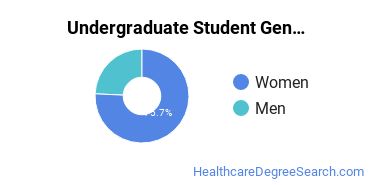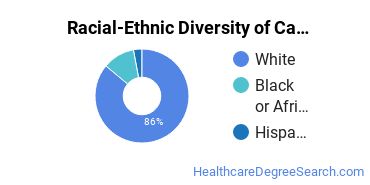Cape Girardeau Career and Technology Center Healthcare Programs
Located in Cape Girardeau, Missouri, Cape Girardeau Career and Technology Center is a public institution. The surrounding area of the school is a good match for students who enjoy city life.
Featured schools near , edit
Where Is Cape Girardeau Career and Technology Center?

Contact details for Cape Girardeau CTC are given below.
| Contact Details | |
|---|---|
| Address: | 1080 S. Silver Springs Rd., Cape Girardeau, MO 63703-7511 |
| Phone: | 573-334-0826 |
| Website: | www.capectc.org |
Can I Afford Cape Girardeau Career and Technology Center?
Student Loan Debt
It's not uncommon for college students to take out loans to pay for school. In fact, almost 66% of students nationwide depend at least partially on loans. At Cape Girardeau CTC, approximately 32% of students took out student loans averaging $5,048 a year. That adds up to $20,192 over four years for those students.
Cape Girardeau Career and Technology Center Undergraduate Student Diversity

Gender Diversity
Of the 133 full-time undergraduates at Cape Girardeau CTC, 15% are male and 85% are female.

Racial-Ethnic Diversity
The racial-ethnic breakdown of Cape Girardeau Career and Technology Center students is as follows.

| Race/Ethnicity | Number of Grads |
|---|---|
| Asian | 1 |
| Black or African American | 11 |
| Hispanic or Latino | 1 |
| White | 118 |
| International Students | 0 |
| Other Races/Ethnicities | 2 |
Cape Girardeau Career and Technology Center Healthcare Concentrations
The table below shows the number of awards for each concentration.
| Major | Undergraduate Certificate | TOTAL |
|---|---|---|
| Licensed Practical/Vocational Nurse Training | 73 | 73 |
| Physical Therapy Assistant | 24 | 24 |
| Emergency Medical Technology/Technician (EMT Paramedic) | 11 | 11 |
| Respiratory Care Therapy | 9 | 9 |
| Medical/Clinical Assistant | 8 | 8 |
| TOTAL | 125 | 125 |
References
*The racial-ethnic minorities count is calculated by taking the total number of students and subtracting white students, international students, and students whose race/ethnicity was unknown. This number is then divided by the total number of students at the school to obtain the racial-ethnic minorities percentage.
More about our data sources and methodologies.
